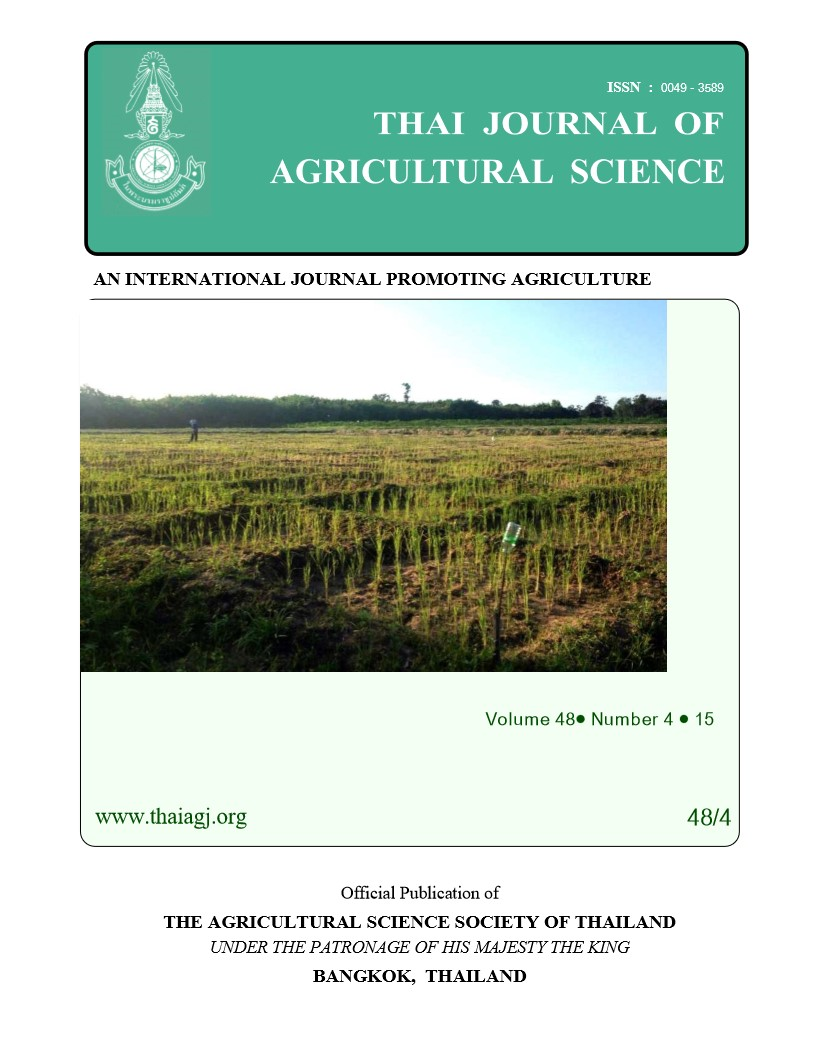Detection of Hardening Pericarp Disorder and Determination of Firmness at Hardening Area in Mangosteen by Visible-Near Infrared Reflectance Spectroscopy
Main Article Content
Abstract
Mangosteen (Garcinia mangostona L.) is an economically important fruit grown commercially in Thailand for domestic consumption and export. The fruit has a thick and hard pericarp. However, hardening pericarp disorder can easily occur as a result of compression or impact during harvest and transport. Classification and prediction of hardening pericarp disorder in mangosteen was investigated using visible-near infrared spectroscopy (Vis/NIRS). Reflectance spectra were acquired on each of 1100 mangosteen samples. The number of samples for training and test set was 733 and 367 samples, respectively. Partial least squares-discriminant analysis (PLS-DA) was used for quantitative analysis. The results of discriminant analysis of normal and hardening pericarp samples using leave-one-out cross-validation achieved an average total accuracy of 92.92%. A further goal was quantitative analysis of firmness of mangosteens with hardening pericarp using Vis/NIR measurements. The optimum calibration model was pretreated using standard normal variate transformation (SNV) pretreatment and was developed using partial least squares regression (PLSR). The model was proven useful for prediction of the degree of pericarp hardening of mangosteen. The coefficients of correlation (R) and root mean square error of cross validation (RMSECV) were 0.89 and 2.67N respectively. This technique has potential use for nondestructive and rapid classification of quality for mangosteen.


